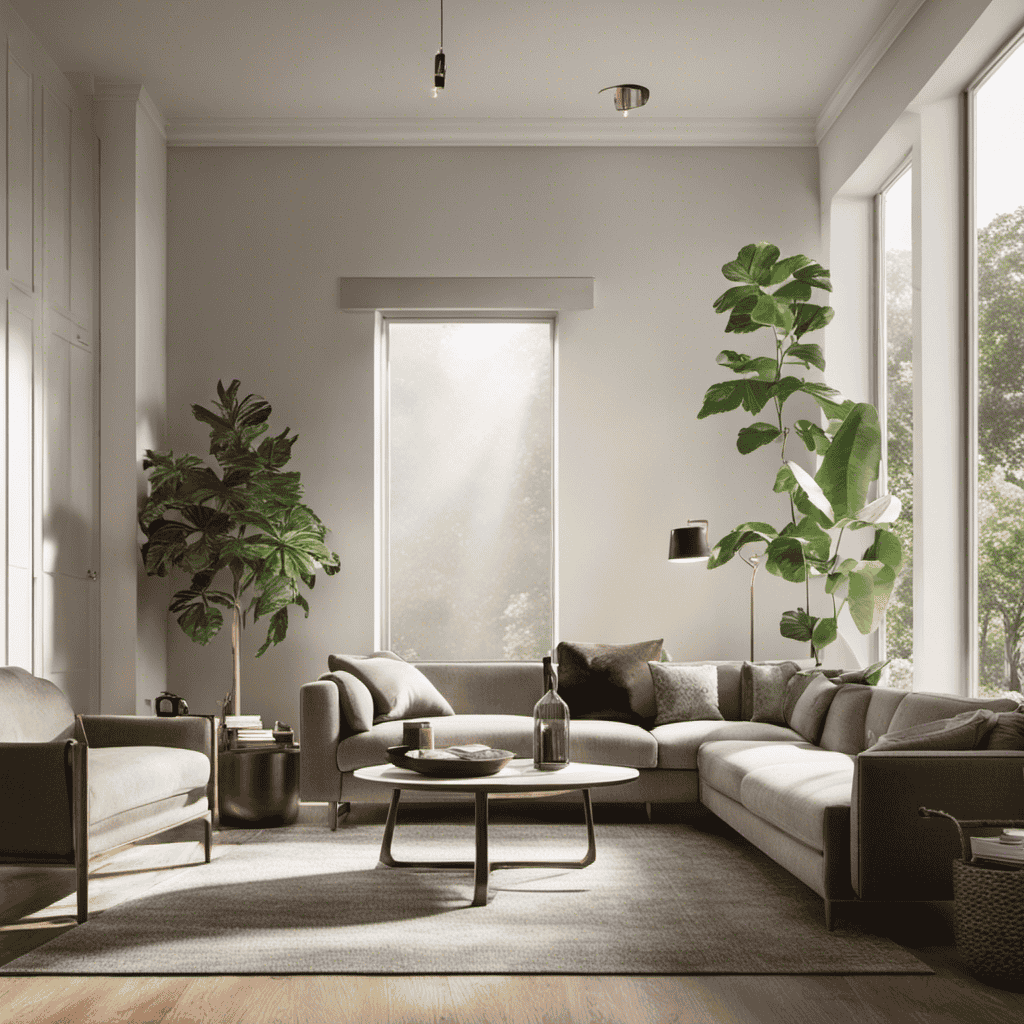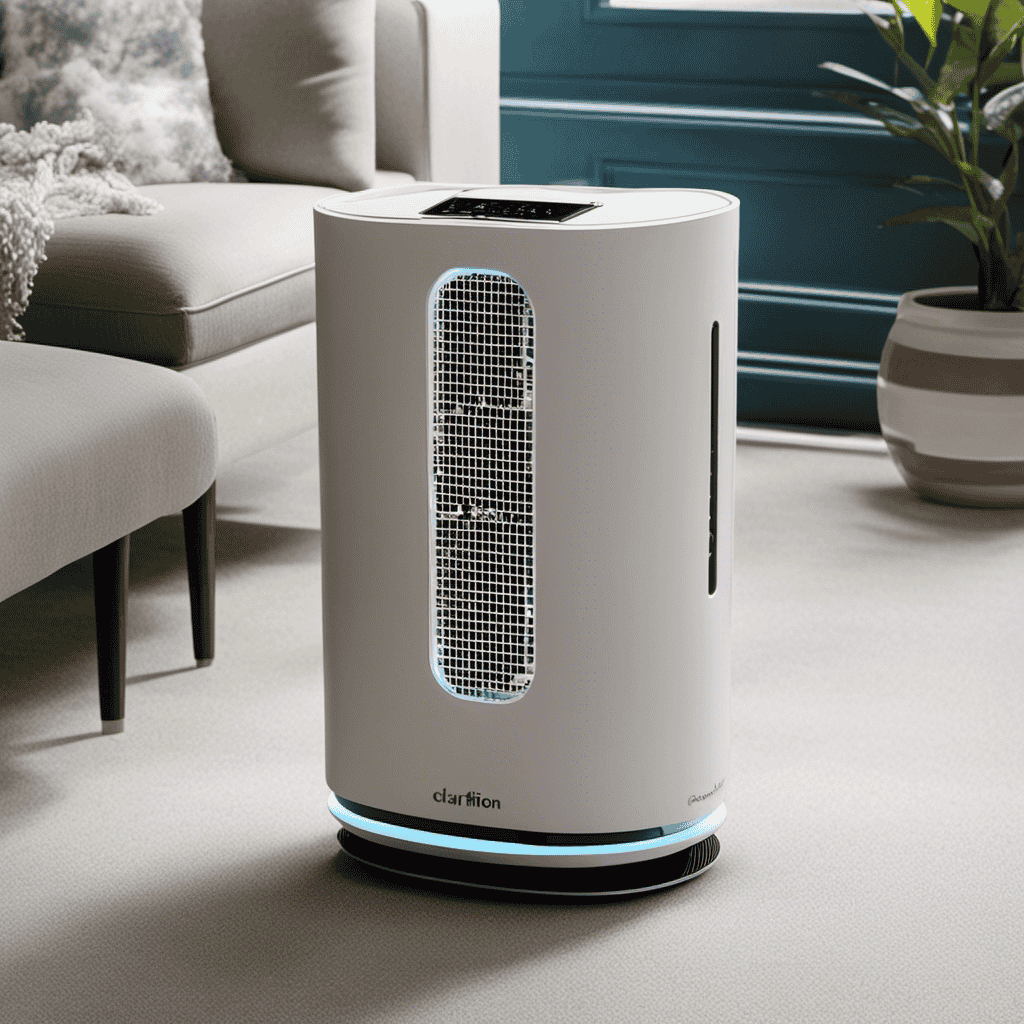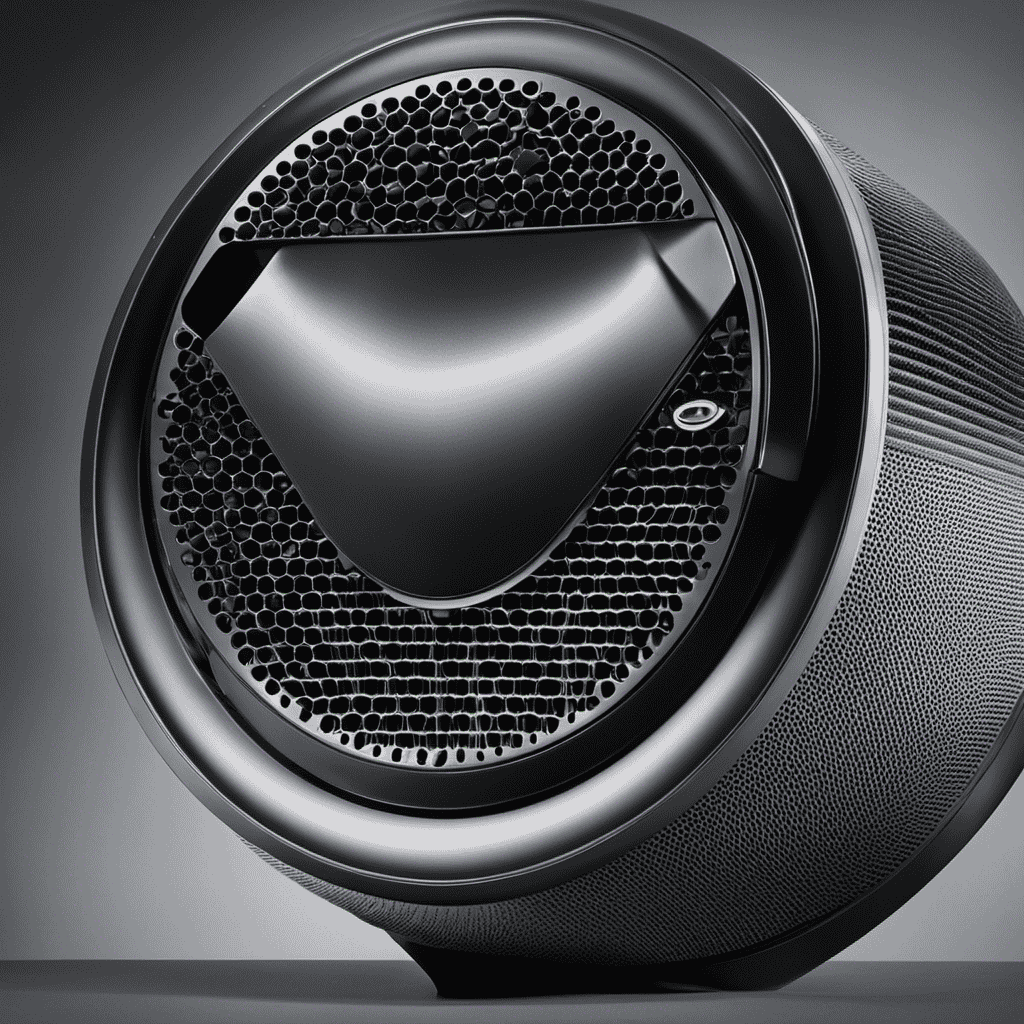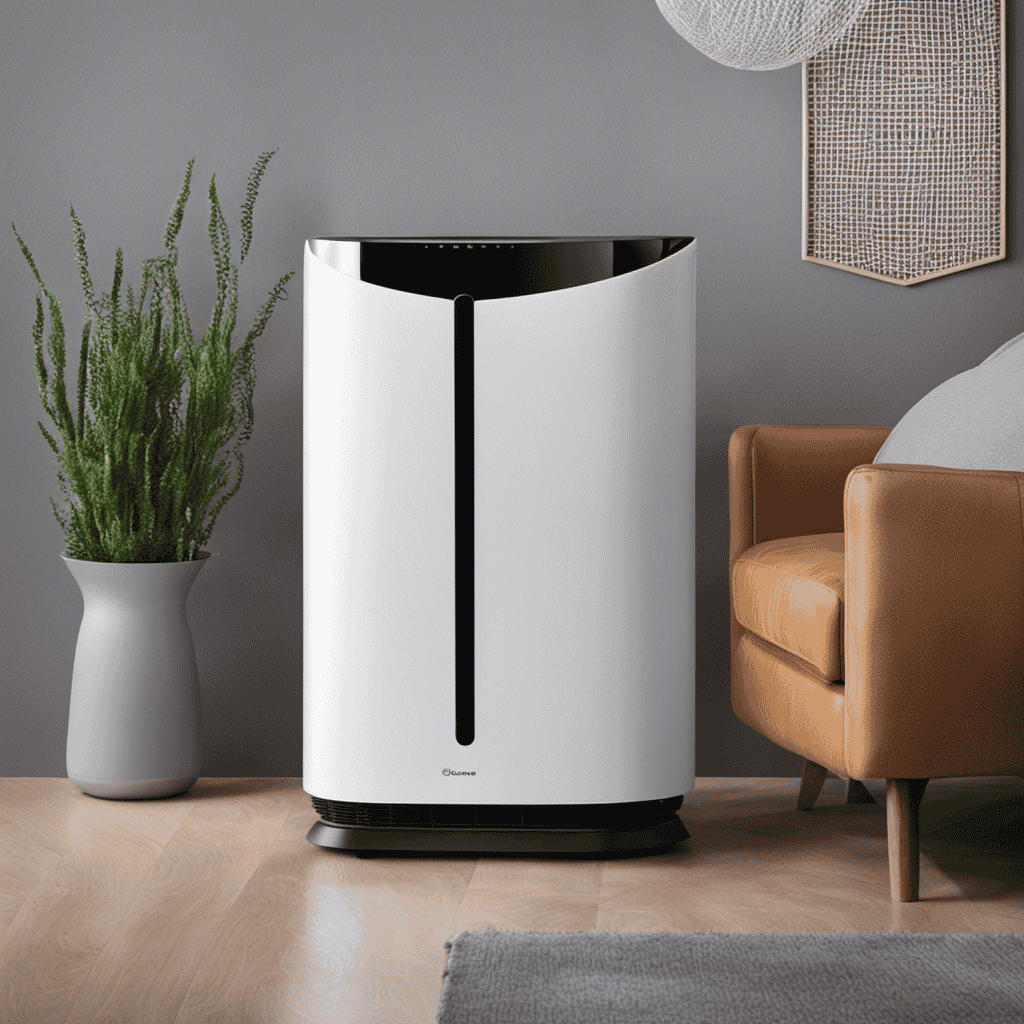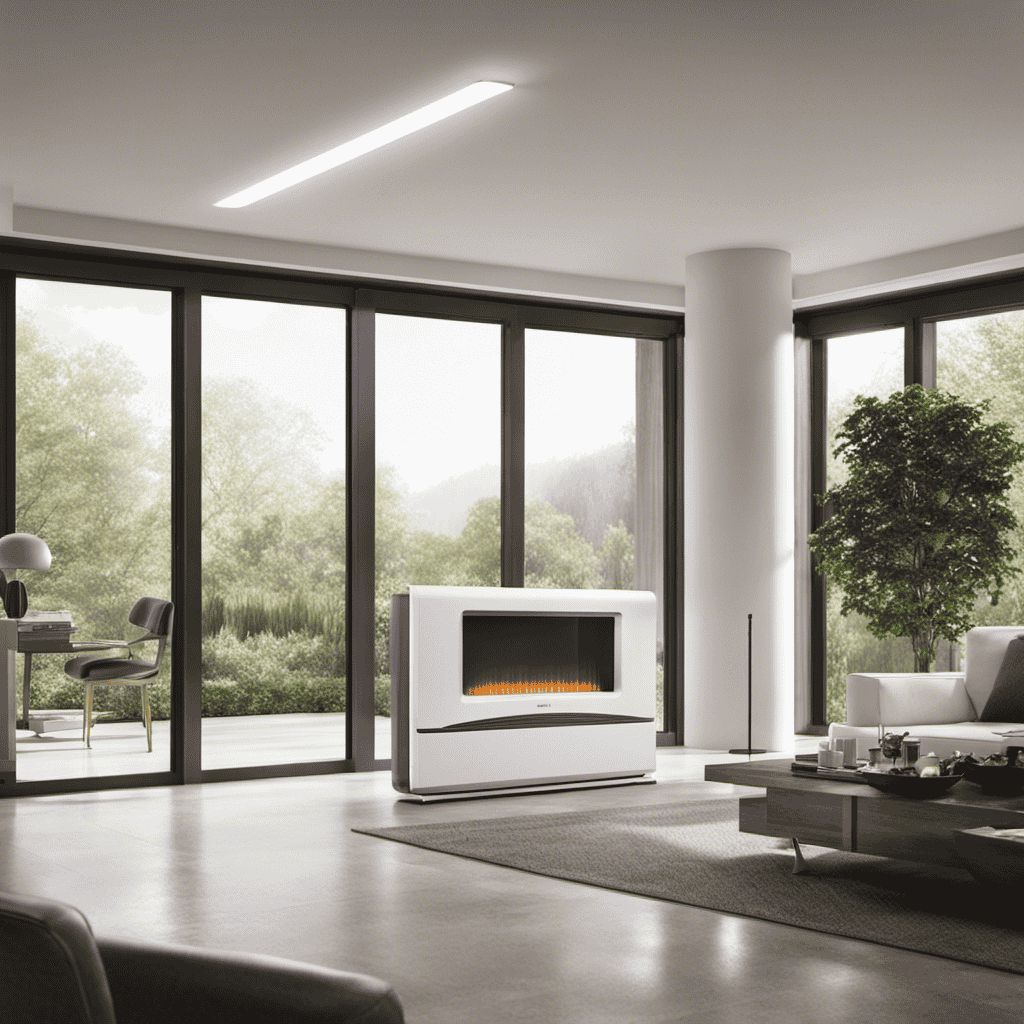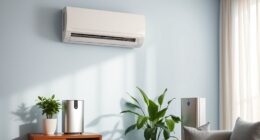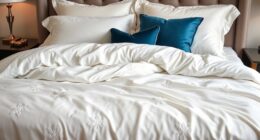When I entered my apartment building, I immediately recognized the scent of marijuana. Having neighbors who smoke weed nearby can pose difficulties, particularly when it impacts the air quality indoors.
In this article, we will explore the effects of secondhand marijuana smoke and the risks of living near marijuana users. I will also provide information on how to choose the right air purifier to remove marijuana odor and offer tips for minimizing the impact of marijuana smoke from neighbors.
Additionally, we will discuss the legal considerations surrounding this issue in shared spaces. So, let’s dive in and find a solution to tackle this problem head-on.
Key Takeaways
- Secondhand marijuana smoke can have negative effects on health, particularly respiratory issues and impaired cognitive development in children.
- Living near marijuana users can pose risks due to secondhand exposure to marijuana smoke, including respiratory problems, lung cancer risk, and impaired cognitive function.
- Marijuana smoke can impact indoor air quality and contains harmful chemicals that can irritate the respiratory system and increase the risk of lung cancer and respiratory diseases.
- Choosing the right air purifier is important for removing marijuana odor, considering factors like odor elimination techniques, filter effectiveness, and budget-friendly options.
The Effects of Secondhand Marijuana Smoke
You’ll want to be aware of the potential effects of secondhand marijuana smoke on your health. Secondhand marijuana smoke can have varying effects on different individuals, but it is essential to understand the potential risks, especially for children.
Children exposed to secondhand marijuana smoke may experience respiratory issues, such as coughing, wheezing, and increased susceptibility to respiratory infections. Moreover, studies have indicated that exposure to secondhand marijuana smoke during childhood may also have long-term effects on cognitive development and increased risk for mental health disorders.
It is crucial to create smoke-free environments for children to ensure their well-being and reduce the health risks associated with secondhand marijuana smoke. Understanding the potential effects on children is just the first step in comprehending the risks of living near marijuana users.
Understanding the Risks of Living Near Marijuana Users
Living near individuals who regularly use marijuana poses potential risks that you should be aware of. Secondhand exposure to marijuana smoke can have negative effects on your health. Research has shown that marijuana smoke contains many of the same harmful chemicals as tobacco smoke, including carbon monoxide, ammonia, and tar. These chemicals can be inhaled by those in close proximity to marijuana users, leading to various health issues. Some of the risks of secondhand exposure include respiratory problems, increased risk of lung cancer, and impaired cognitive function. To better understand the potential risks, take a look at the table below:
| Risks of Secondhand Exposure to Marijuana Smoke | ||
|---|---|---|
| Respiratory problems | Lung cancer risk | Impaired cognitive function |
It is important to be aware of these risks and take necessary precautions to protect yourself and your loved ones. With this knowledge, let’s delve into how marijuana smoke can affect indoor air quality.
How Does Marijuana Smoke Affect Indoor Air Quality
Marijuana smoke can impact the quality of indoor air, which is important to understand and address. Indoor air pollution caused by marijuana smoke can have significant health effects on individuals exposed to it.
Studies have shown that the smoke from marijuana contains many of the same harmful chemicals found in tobacco smoke, such as carbon monoxide and tar. These chemicals can irritate the respiratory system and lead to chronic bronchitis, coughing, and wheezing. Additionally, marijuana smoke contains carcinogens that can increase the risk of lung cancer and other respiratory diseases.
It is important to be aware of these potential health risks and take steps to minimize exposure to marijuana smoke, such as using air purifiers and ventilating the space properly.
Choosing the Right Air Purifier for Removing Marijuana Odor
When it comes to choosing the right air purifier for removing marijuana odor, there are a few key points to consider.
Firstly, you’ll want to look into different odor elimination techniques that the purifier uses, such as activated carbon or ozone generation.
Secondly, it’s important to compare the filter effectiveness of different models, considering factors like HEPA filtration and the ability to remove volatile organic compounds (VOCs).
Lastly, if you’re on a budget, there are plenty of budget-friendly purifier options available that can still effectively eliminate marijuana odor from your indoor space.
Odor Elimination Techniques
If you want to tackle the issue of odor elimination, consider using an air purifier to combat the smell when your neighbors smoke pot. Air purifiers are effective in removing various unpleasant odors, including marijuana.
Here are some odor control methods and home remedies to consider:
- Activated charcoal: This natural absorbent can help trap and eliminate odors.
- Baking soda: Placing bowls of baking soda around your home can help absorb and neutralize odors.
- Vinegar: Mixing vinegar with water and spraying it in the air can help eliminate odors.
- Essential oils: Diffusing essential oils like lavender or eucalyptus can mask unwanted smells.
- Homemade odor absorbers: Creating sachets with ingredients like coffee grounds, citrus peels, or dried herbs can help absorb odors.
While these home remedies can be helpful, air purifiers with specialized filters are more effective at eliminating odors.
Now, let’s explore the effectiveness of different air purifier filters in comparison.
Filter Effectiveness Comparison
Using specialized filters, air purifiers can effectively eliminate various unpleasant odors, making them a valuable tool for odor control.
When it comes to filter effectiveness, there are different types of filters available in the market. The most common ones are HEPA filters and activated carbon filters.
HEPA filters are highly efficient in removing airborne particles such as dust, pollen, and pet dander, which can contribute to poor indoor air quality.
On the other hand, activated carbon filters are specifically designed to absorb and trap odors, volatile organic compounds (VOCs), and other chemical pollutants.
By combining both types of filters in an air purifier, you can achieve optimal odor elimination and improve indoor air quality.
When comparing filters, it is important to consider the size of the room, the level of odor or pollution, and the specific needs of the individuals using the air purifier.
Budget-Friendly Purifier Options
There are affordable options available for purifiers that can fit within your budget. When it comes to air purifiers, there are several benefits to consider. Here are some budget-friendly options that you can explore:
-
Compact and Portable: Imagine a small device that you can easily carry from room to room, ensuring clean air wherever you go.
-
Whisper-Quiet Operation: Picture an air purifier that operates silently, allowing you to enjoy a peaceful and serene environment.
-
Efficient Filtration System: Visualize a purifier that effectively captures and removes airborne particles, such as dust, pollen, and pet dander.
-
Energy-Saving Technology: Envision a purifier that is designed to consume less energy, helping you save on your electricity bills.
-
Customizable Settings: Picture a purifier with adjustable fan speeds and timers, allowing you to personalize your air purification experience.
Tips for Minimizing the Impact of Marijuana Smoke From Neighbors
To minimize the impact of marijuana smoke from your neighbors, you can try closing your windows and using an air purifier. This will help in minimizing the odor and improving the air quality inside your home. The smoke particles from marijuana can easily enter your living space through open windows, so closing them will act as a barrier. Additionally, using an air purifier equipped with a HEPA filter can effectively remove the smoke particles from the air, reducing the smell and improving the overall air quality.
Here are some tips for minimizing the impact of marijuana smoke:
| Tip | Description |
|---|---|
| Close Windows | Closing windows acts as a barrier to prevent smoke from entering your home. |
| Use Air Purifier | An air purifier with a HEPA filter can effectively remove smoke particles from the air. |
| Ventilate Properly | When the smoke smell is strong, open windows and use fans to ventilate the space. |
| Utilize Odor Neutralizers | Products like activated charcoal or baking soda can help neutralize the smell. |
| Communicate with Neighbors | Openly discussing the issue with your neighbors may lead to a mutually beneficial solution. |
Legal Considerations for Addressing Marijuana Smoke Issues in Shared Spaces
When it comes to addressing marijuana smoke issues in shared spaces, it is important to consider the legal rights and restrictions that govern such situations.
Understanding the laws surrounding marijuana use and smoking in your jurisdiction can provide you with the necessary knowledge to navigate these challenges effectively.
Additionally, familiarizing yourself with shared space regulations and conflict resolution strategies can help you find a balanced and fair solution that respects the rights and needs of all parties involved.
Legal Rights and Restrictions
Legal restrictions may limit the use of an air purifier to combat the smell of neighbors smoking pot. When it comes to addressing this issue, it is important to consider the legal implications and community guidelines.
Here are some key points to keep in mind:
-
Understand local laws: Research the specific laws in your area regarding marijuana use and the use of air purifiers.
-
Review community guidelines: Check if your building or neighborhood has any specific rules or regulations regarding smoking or air purifier usage.
-
Seek legal advice: If you are unsure about the legalities, consult with a lawyer who specializes in property or landlord-tenant law.
-
Communicate with neighbors: Openly discuss the issue with your neighbors to find a mutually agreeable solution.
-
Explore alternative options: If legal restrictions prevent the use of an air purifier, consider other methods such as sealing air vents or using odor-absorbing materials.
Shared Space Regulations
Understanding and adhering to shared space regulations is essential when addressing the issue of neighbors smoking pot and combatting the smell.
Shared space regulations outline the rules and guidelines for behavior within communal areas, ensuring that everyone’s legal rights and restrictions are respected.
These regulations often cover issues such as noise levels, cleanliness, and the use of substances. When it comes to smoking pot, it is important to be aware of any specific rules regarding smoking within shared spaces.
Some buildings or communities may have restrictions on smoking altogether, while others may allow it in designated areas. By understanding and following these regulations, we can create a harmonious living environment for everyone involved.
Now, let’s explore some conflict resolution strategies that can help address this issue effectively.
Conflict Resolution Strategies
To resolve conflicts with your neighbors regarding the smell of pot, consider implementing effective communication strategies. Open and honest communication is key to finding a resolution. Here are five conflict resolution techniques that can help:
- Active listening: Truly listen to your neighbors’ concerns without interrupting or dismissing their feelings.
- Empathy: Put yourself in their shoes and try to understand their perspective.
- Compromise: Explore potential solutions that both parties can agree on, such as using air purifiers or designated smoking areas.
- Mediation: If direct conversations aren’t productive, consider involving a neutral third party to facilitate discussions.
- Establish boundaries: Clearly communicate your expectations and boundaries to prevent future conflicts.
Frequently Asked Questions
Are There Any Health Risks Associated With Secondhand Marijuana Smoke?
There are potential health risks associated with secondhand marijuana smoke. Studies suggest that exposure to secondhand marijuana smoke can have similar health effects as secondhand tobacco smoke, including respiratory and cardiovascular issues.
What Are the Potential Effects of Living Near Marijuana Users?
Living near marijuana users can have potential health risks, such as exposure to secondhand smoke. Long-term effects may include respiratory issues and cognitive impairment. It is important to consider these factors when deciding on measures like using an air purifier.
How Does Marijuana Smoke Impact the Quality of Indoor Air?
Marijuana smoke can significantly impact the quality of indoor air, causing indoor air pollution. However, using an air purifier can be effective in reducing the levels of pollutants and improving air quality.
What Factors Should Be Considered When Selecting an Air Purifier to Eliminate Marijuana Odor?
When considering factors for selecting an air purifier to eliminate marijuana odor, it’s important to look for one with activated carbon filters, HEPA filtration, and an appropriate room size coverage.
Can You Provide Any Tips on Reducing the Impact of Marijuana Smoke From Neighbors?
Reducing the impact of marijuana smoke from neighbors can be challenging. However, there are ways to minimize the smell. Controlling ventilation by sealing gaps and using air purifiers can help create a more pleasant living environment.
Conclusion
In conclusion, living near neighbors who smoke pot can be a challenging situation. However, by investing in a high-quality air purifier, you can create a sanctuary within your own home, free from the lingering odor of marijuana smoke.
Symbolically, the air purifier becomes a shield, protecting you from the invasion of unwanted smells. With proper legal considerations and the right tools, you can minimize the impact of marijuana smoke and maintain a clean and healthy living environment.
Remember, taking proactive steps is key to ensuring a holistic and peaceful space.
